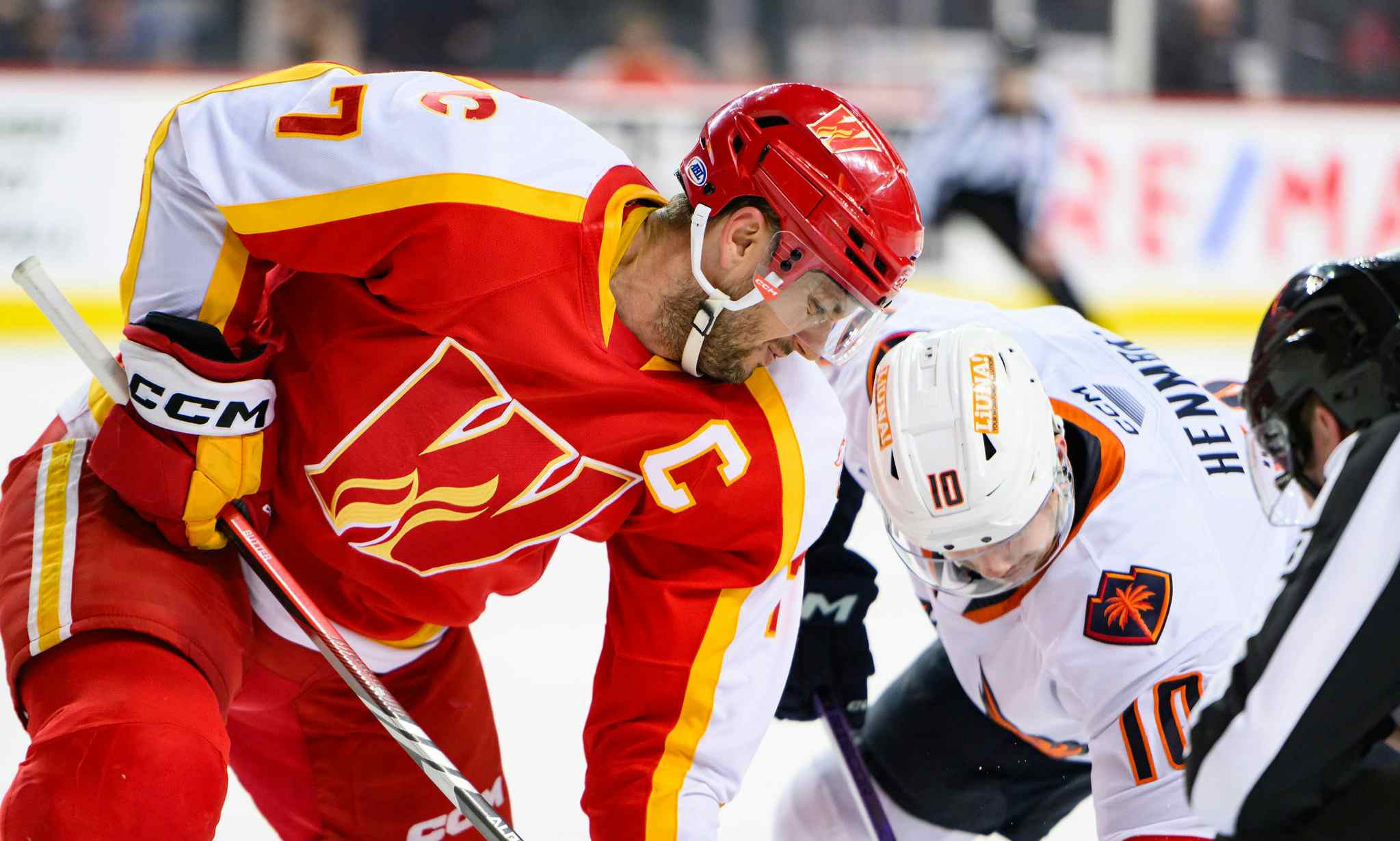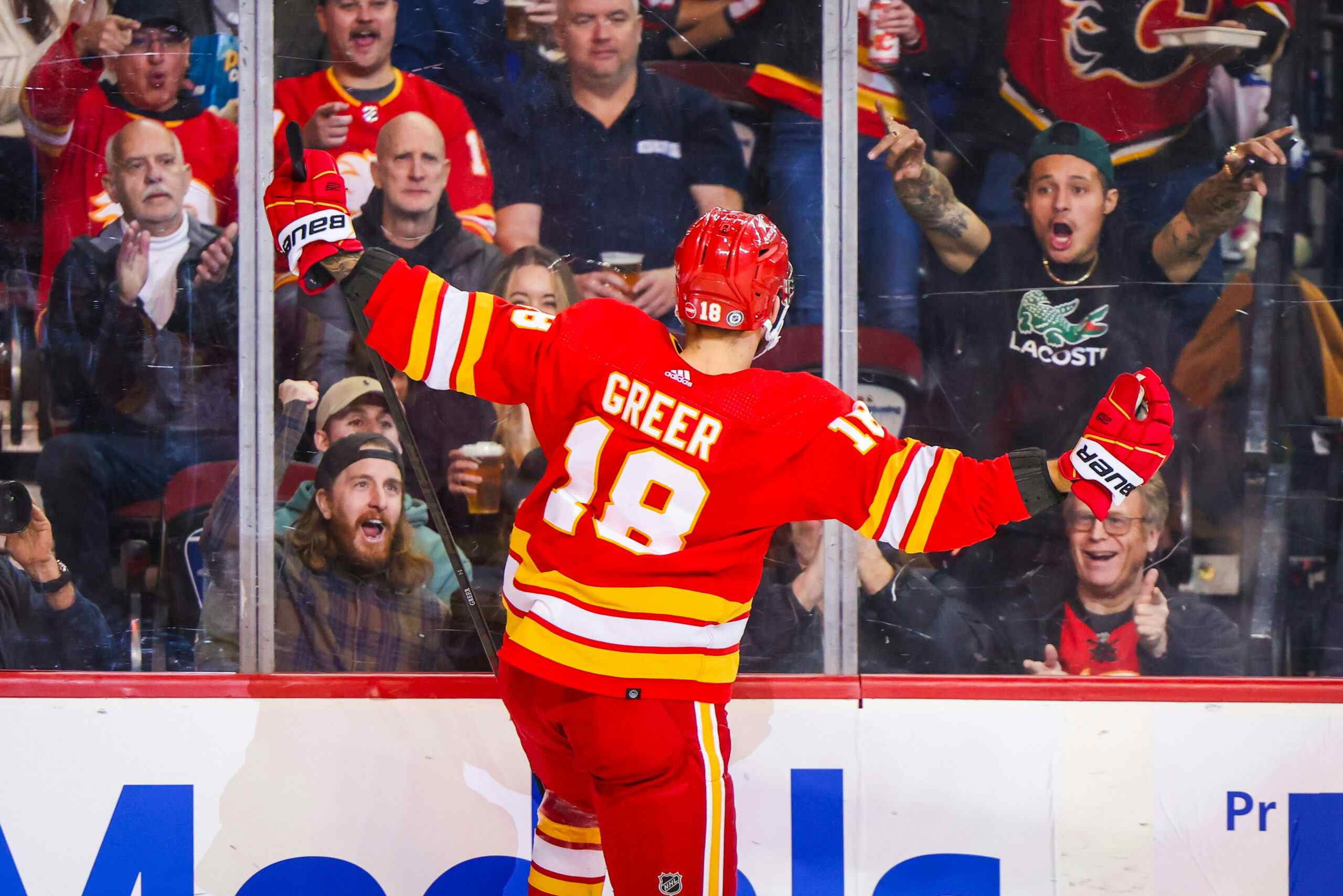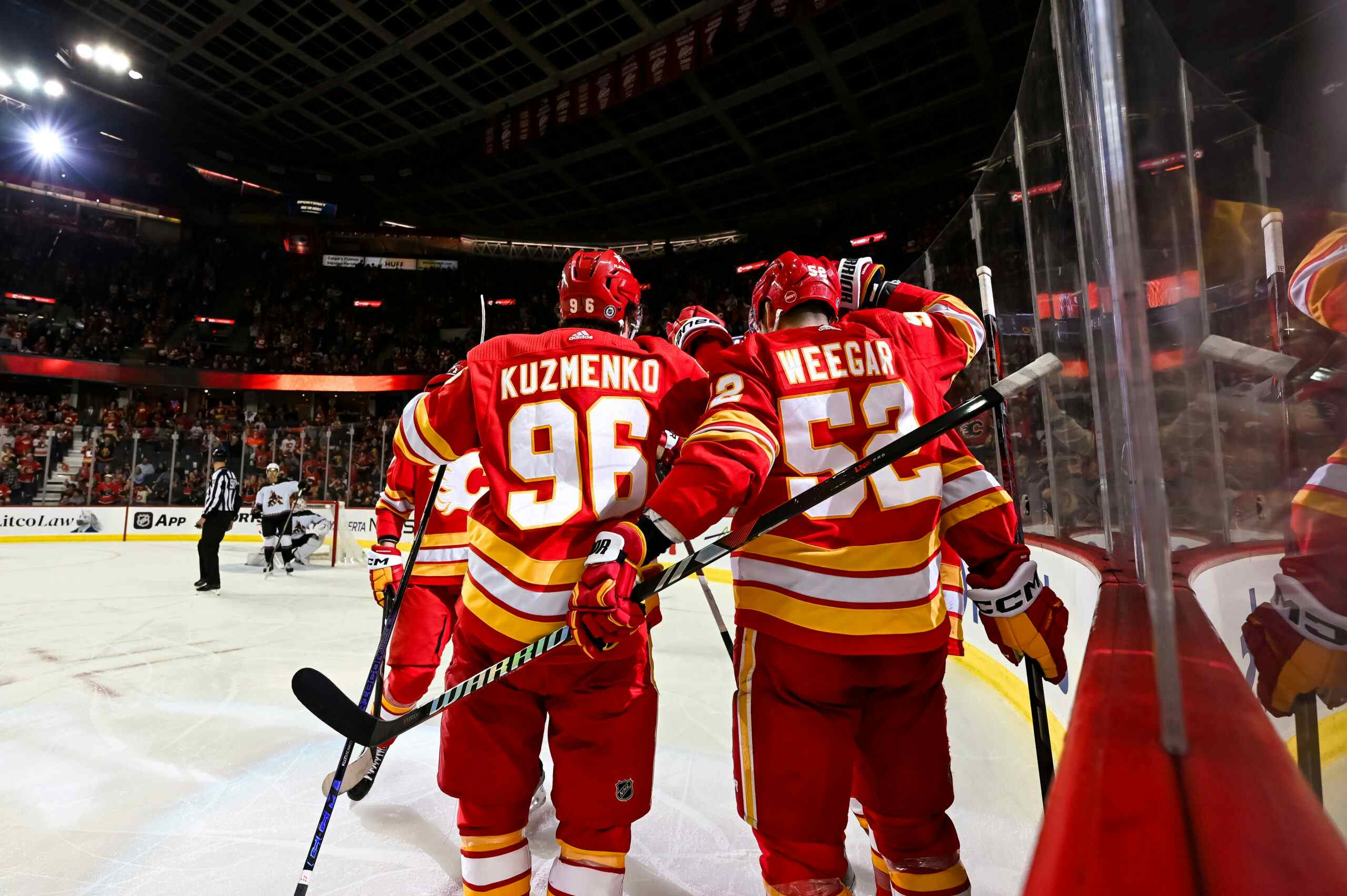The playoffs as a development tool
By Ryan Pike
11 years ago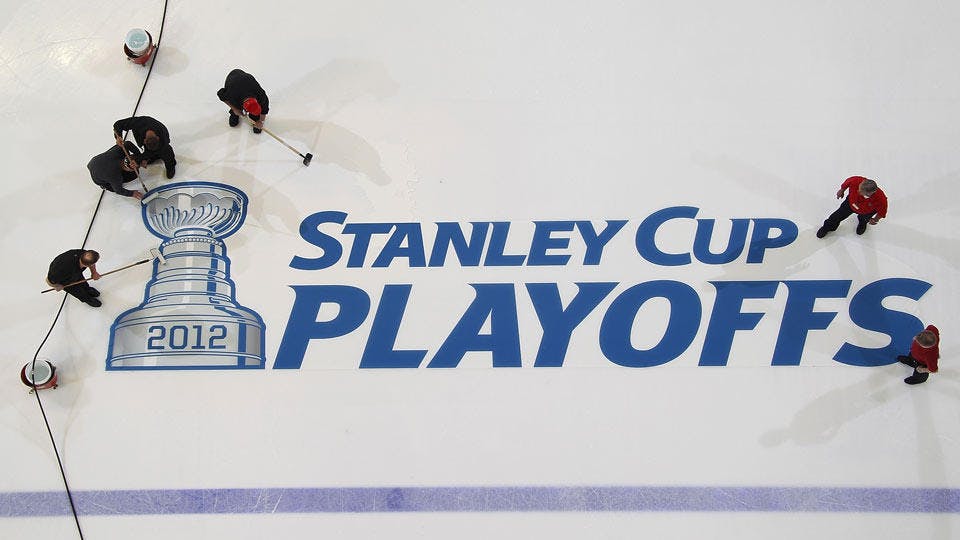
Around this time of year there’s a fairly large contingent of my friends and family who ask me the same thing – I often bring up the success of Flames prospects in their respective league playoffs (as the big club isn’t involved anymore) – and am met with a blank stare, followed by “why do their playoffs matter?”’
Through the Wringer
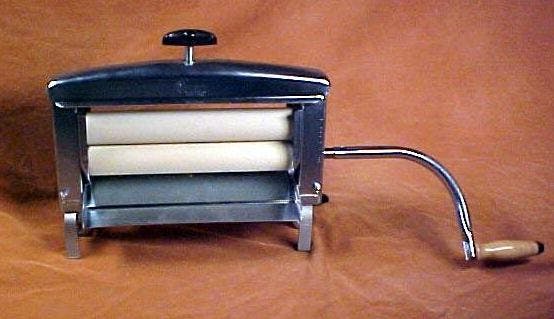
Playoffs are undoubtedly important for teams, immeasurably so for the highest levels of pro sports. However, when younger players are developing in junior, college or the minor leagues, there’s a question of how much playoff hockey – particularly long playoff runs – allow a young player to develop. In some senses, they’re a huge opportunity for a guy to show off his skills or to develop in new situations. When I spoke with him during this winter’s Hockey Canada selection camp, Flames prospect Max Reinhart pointed to his experience at last year’s Memorial Cup as a reason he didn’t feel tremendously nervous. Experiences in clutch situations, even in losing, breeds confidence in young players so they canf ace similar situations in the future.
That said, playoff success can be both fickle and very arbitrary. A middling player can look like a world-beater on a stacked team – one of my personal reservations about getting overly excited about Edmonton Oil Kings players as draft prospects – and a bounce here or there can be the difference between playoff success and failure. Putting too much stock in something so brief and prone to dumb luck can be a bit misleading. Last season, then-Abbotsford head coach Jim Playfair was hesitant to endorse Leland Irving as an NHL-caliber goaltender, saying he needed to win a playoff round. Having seen Irving’s play at the NHL level this past season, it seems rather odd that he would be required to clear such an arbitrary hurdle.
There seem to be a few pros and cons regarding long playoffs. Players on long runs get in lots of games and get to play in a lot of different situations. That said, they have a short summer and that can hinder their ability to heal nagging injuries or drastically change their work-outs. For example, Greg Nemisz went to the Memorial Cup in back-to-back years and then turned pro with Calgary. As a result, he had roughly four-to-six weeks of down-time before being thrust back into the hockey routine. I won’t say that’s the source of the difficulties he’s faced as a pro, but more time to learn, decompress and recover from the season could do him wonders.
The Negatives

Then again, long summers can have downsides. For example, look at Ryan Howse. Howse’s long summers arguably contributed to some of his bad conditioning habits, which led to Abbotsford coach Troy Ward sending him home earlier this season for the better part of a month. Oddly, Howse’s linemate Roman Horak had the same long summers at his disposal and seemed to make the most of them.
Ultimately, though, it appears based on the last five years of Flames drafting that players that get a chance to play in a lot of playoff games tend to develop more rapidly than those who don’t. Mikael Backlund, T.J. Brodie, Lance Bouma and Greg Nemisz all went to the conference finals (or further) in junior, with Backlund following up a Memorial Cup appearance with two rounds of AHL playoffs in his first pro year. That said, forward Ryley Grantham went on the same long Memorial Cup run as Backlund and hasn’t turned out to be anything on the pro level, so a lot of the difference in outcomes between players seems to be due to idiotsyncratic factors.
Conclusion
There’s nothing quite as useful for a young hockey player’s development than playing a lot of hockey. That said, the biggest benefits not only are honing their abilities to battle and win, but also building into them a capacity to endure high-pressure situations, lose and then re-group.
A great deal of Max Reinhart’s development has arguably been due to a Memorial Cup loss, and several other up-and-coming Flame prospects have managed to win (and lose) at the highest levels of their leagues. In that sense, it’s probably not all that surprising that Calgary’s best prospects have gone on long playoff runs while some of their less exciting youngsters haven’t – often times, good players create opportunities for themselves to showcase their talents and further their own development.
The more interesting recent development is the Flames organization bringing in AHL veterans to Abbotsford for the express purpose of icing a more competitive team, a tacit acknowledgment that keeping the Heat in the playoff pressure cooker will enhance the development of its players in the long-run.
Recent articles from Ryan Pike

